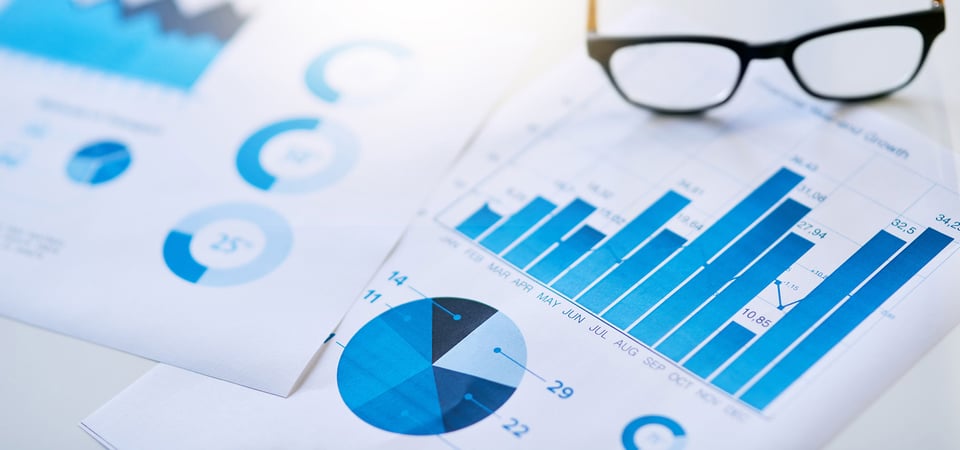Companies in the oil and gas industry strive to achieve the same goal as any other industry: produce product for as little as possible and sell it for as much as possible.
But for O&G producers, achieving that goal can be quite challenging. Finding and producing petroleum products is physically difficult, and tends to be very expensive.
Exploration and production has reached a level of technological sophistication that might have been unimaginable only a few decades earlier. Producers worldwide are leveraging that technical capability in finding and retrieving reserves that once would have been out of reach.
But most producers badly underutilize a different form of technology that’s available to them. And this form of technology offers an opportunity for significantly reducing the costs of production.
Advanced Data Technologies
The E&P process (exploring, drilling, producing) generates a tremendous amount of data. Many varieties of data have long been used to generate geologic models of subsurface layers, and in monitoring the many mechanisms of drilling.
But like most industries in this age of Big Data, the O&G industry is generating more data than ever before. Data is flooding in at unprecedented rates, and much of it is going unused. Worldwide, it’s estimated that less than 1%1 of all generated data is utilized in operational decision-making.
While the O&G industry understands the power and value of using data intelligently and quickly — perhaps more than most other industries — the data analyst role in this industry tends to be undervalued. But in reality, the data scientist should be considered as important to an E&P team as the landman, reservoir engineer, drilling and completions engineer, etc.
Now, more than ever, it’s crucial that we identify ways to use all the data the O&G industry generates in making fast, smart decisions that can help us increase supply in a safe way.
The Big Data Bonanza
Geologists and petrophysicists use data about the types of rock surrounding nearby wells, along with seismic data, to help locate product.
Well log data is captured on every well, and is used to generate an understanding of the rock that was cut and the fluids that exist around a well. Well log data relates only to the area closely surrounding the well, but it’s less accurate further out. Sophisticated interpretation algorithms are applied to derive the characteristics of the area between wells.
These algorithms calculate billions of data points with each execution. Just one raw seismic data set can range from hundreds of gigabytes in size, multiplying into terabytes once processing and interpretations are completed. But the purpose is simple: create a clear, accurate subsurface image by integrating lots of data of various measures and data types to help find O&G.
Better Analytics Lead to Reduced Costs
There’s no way around it: Finding and producing O&G safely is very expensive. A shale well can easily cost millions. Offshore wells can cost tens or hundreds of millions.
Producing O&G means drilling and completing the wells, connecting them to pipelines, and keeping the flow of the product moving efficiently. Production optimization is dependent on models created during exploration. Improving D&C operations can significantly reduce costs.
During the drilling process, every well produces video, image, and structured data. This is probably the fastest-growing subset of data. So how do we use all this data to find more O&G and extract it cheaply and safely? Modern analytics.
A study by Bain & Company indicates that harnessing Big Data with analytics in O&G “could help oil and gas companies improve production by 6% to 8%2.” Better data analytics can improve the ability to find product, reduce the cost of development and production, and make energy more affordable and safer to extract.
O&G Producers Must Evolve to Next-Generation Analytics
There is much to learn from the available O&G E&P data, but the industry must look beyond traditional analysis methodologies and perspectives. Fully leveraging the available data is still an area of vulnerability.
Most O&G analysis is performed with traditional technologies and confined within a small geographical area. Data is stored in various databases and file folders on assorted devices at multiple locations. Integration and analysis of this data is still very much a manual process for most O&G producers.
Data science and big data analytics can help evolve the oil and gas industry to next-generation capabilities. It can provide greater accuracy for decision support, and reduce the risk incurred with each decision. Just imagine what could be learned if we were able ingest and curate (conform, refine and publish) all this data for higher-resolution models and deeper/broader analytics.
Computer systems will become more intelligent. They’ll be able to independently make simple decisions. They’ll support experienced professionals in making better, faster decisions based on best practices, helping to safely reduce costs and increase production.
Now is the time to focus on extending solutions, working to integrate the traditional data with all other data types and sources in improving the E&P process.
A New Age of Productivity
The O&G industry is poised to create many jobs for data scientists. It’s an industry that represents a ripe environment for adopting and deploying new software solutions.
Technology providers to this industry must embrace Big Data analytics. Adapting to the age of Big Data will be a challenging process, and will require a mindset change. Few companies are currently poised to meet that challenge. But those that do will have the strategic data and intelligence to deploy new applications that will be smarter, and provide more complete solutions, than stranded static data in empty-point software products.
The industry must educate “Big Data” technology providers on the data types the industry produces, so that the growing flood of data can be ingested and curated faster. The data can then be used to help find and produce more O&G at lower cost and risk.
Or — even better — O&G producers should select technology providers that have already amassed a rich understanding of the industry and are poised to help producers leverage data analytics in reducing production costs and enhancing profitability.
#IdeasRealized
Works cited
1. App Developer (2016, December 23) Retrieved from https://appdevelopermagazine.com/4773/2016/12/23/more-data-will-be-created-in-2017-than-the-previous-5,000-years-of-humanity-/
2. LinkedIn (2018, February 21) Retrieved from https://www.linkedin.com/pulse/data-analytics-tool-reduce-cost-production-oil-gas-ajay-bidyarthy/




